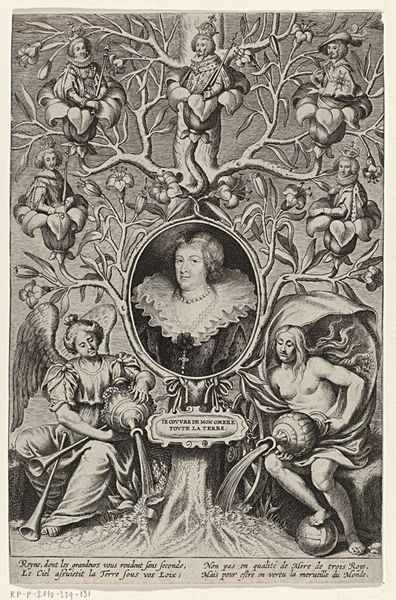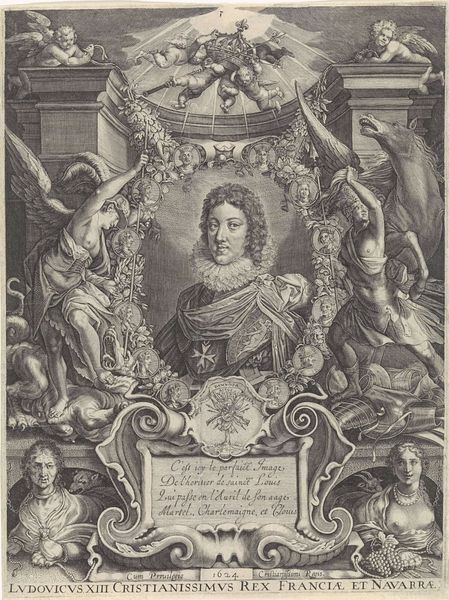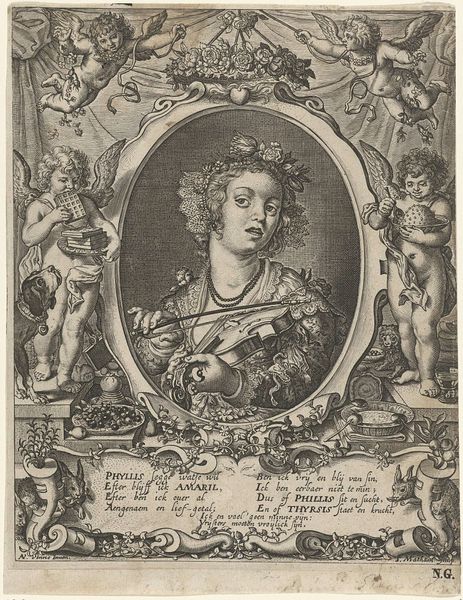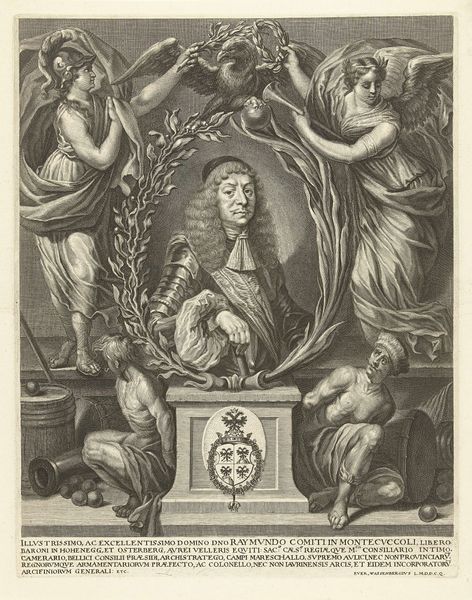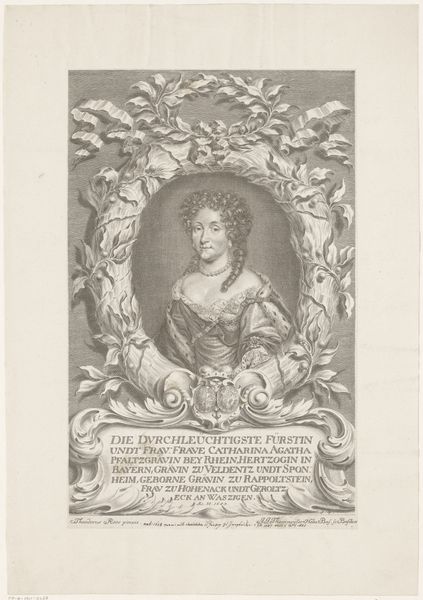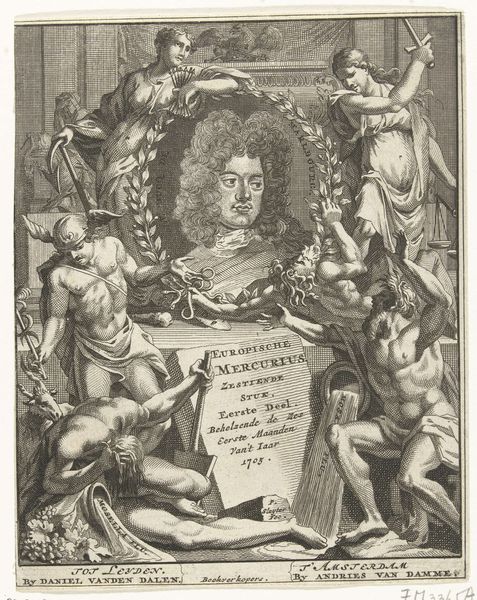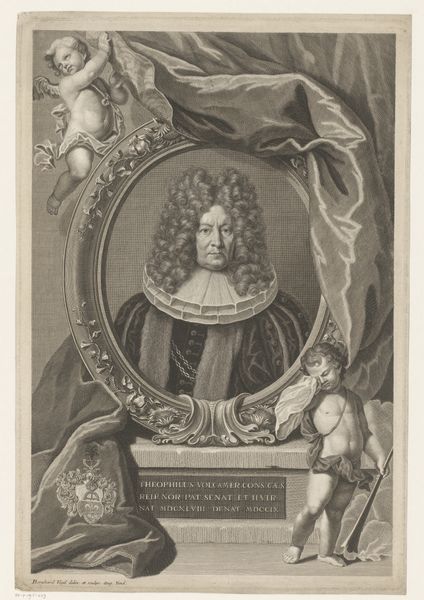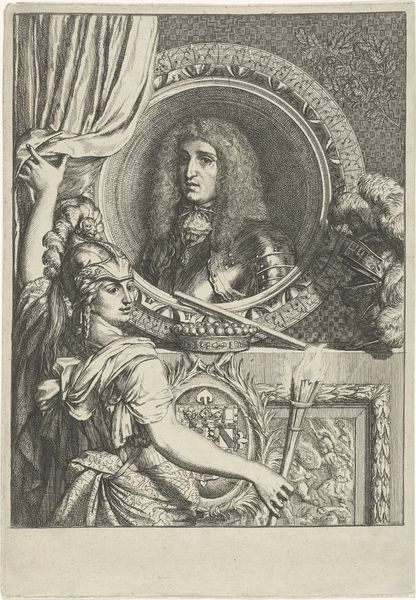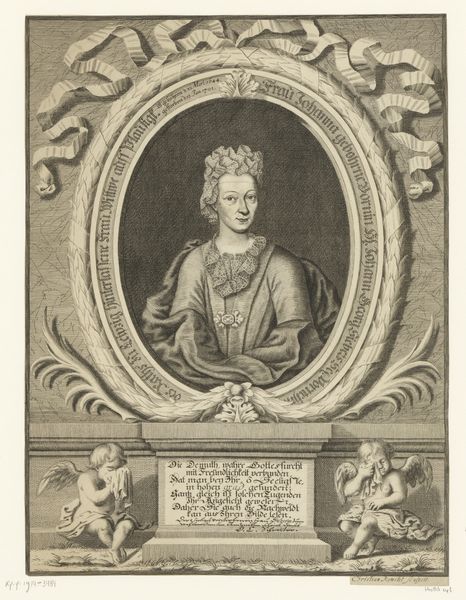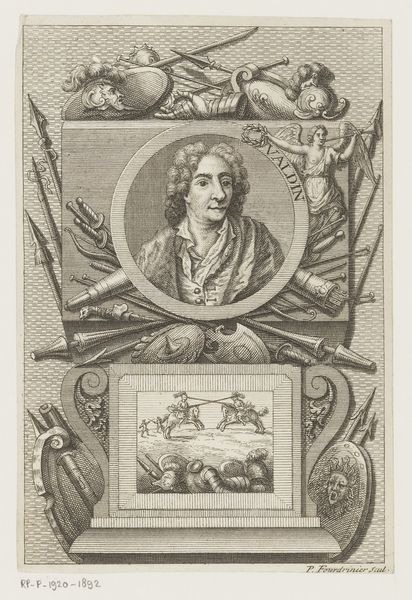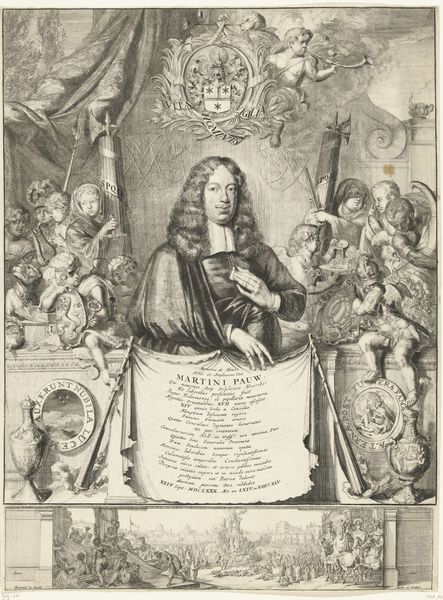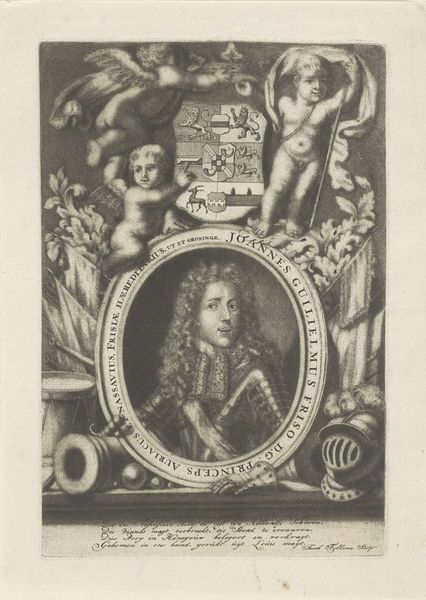
Portret van Henrietta Maria van Bourbon, koningin van Engeland c. 1625 - 1649
0:00
0:00
print, engraving
#
baroque
# print
#
history-painting
#
engraving
Dimensions: height 183 mm, width 140 mm
Copyright: Rijks Museum: Open Domain
Editor: Here we have a print titled "Portret van Henrietta Maria van Bourbon, koningin van Engeland," dating from somewhere between 1625 and 1649, attributed to Cornelis Galle I. It's quite ornate, almost overwhelming. What catches your eye when you look at it? Curator: I'm immediately drawn to the process of engraving. Think about the labor involved. Each line meticulously etched, repeated, refined. The image becomes a testament to craft. Consider the socioeconomic context – who commissioned it? What workshop produced it? This print functioned within systems of power, likely serving a propagandistic function, circulating an image of idealized royalty. Editor: Propagandistic, interesting! So, the materials themselves are linked to power structures? Curator: Absolutely. The paper, the ink, the tools of the engraver – all part of a larger network of trade, production, and consumption. How does the texture of the engraving, the black-and-white contrast, impact the viewer compared to, say, an oil painting? The mass reproducibility itself democratizes the image, albeit within limitations set by societal class structures of access. We are faced with understanding materiality to appreciate cultural values of beauty and the mechanics of portraiture. Editor: So, understanding how the print was made helps us understand its purpose in society? Curator: Precisely. It moves beyond just admiring a likeness and digs into the complex relationship between the artist, patron, and the means of production itself. Editor: I never thought of it that way. Now I see this isn't just a pretty picture; it’s a product of its time and the result of very particular, class-based practices. Curator: Exactly. Reflecting on materiality provides a fresh perspective, right? It adds another layer of interpretation beyond traditional notions of aesthetic appreciation.
Comments
No comments
Be the first to comment and join the conversation on the ultimate creative platform.
